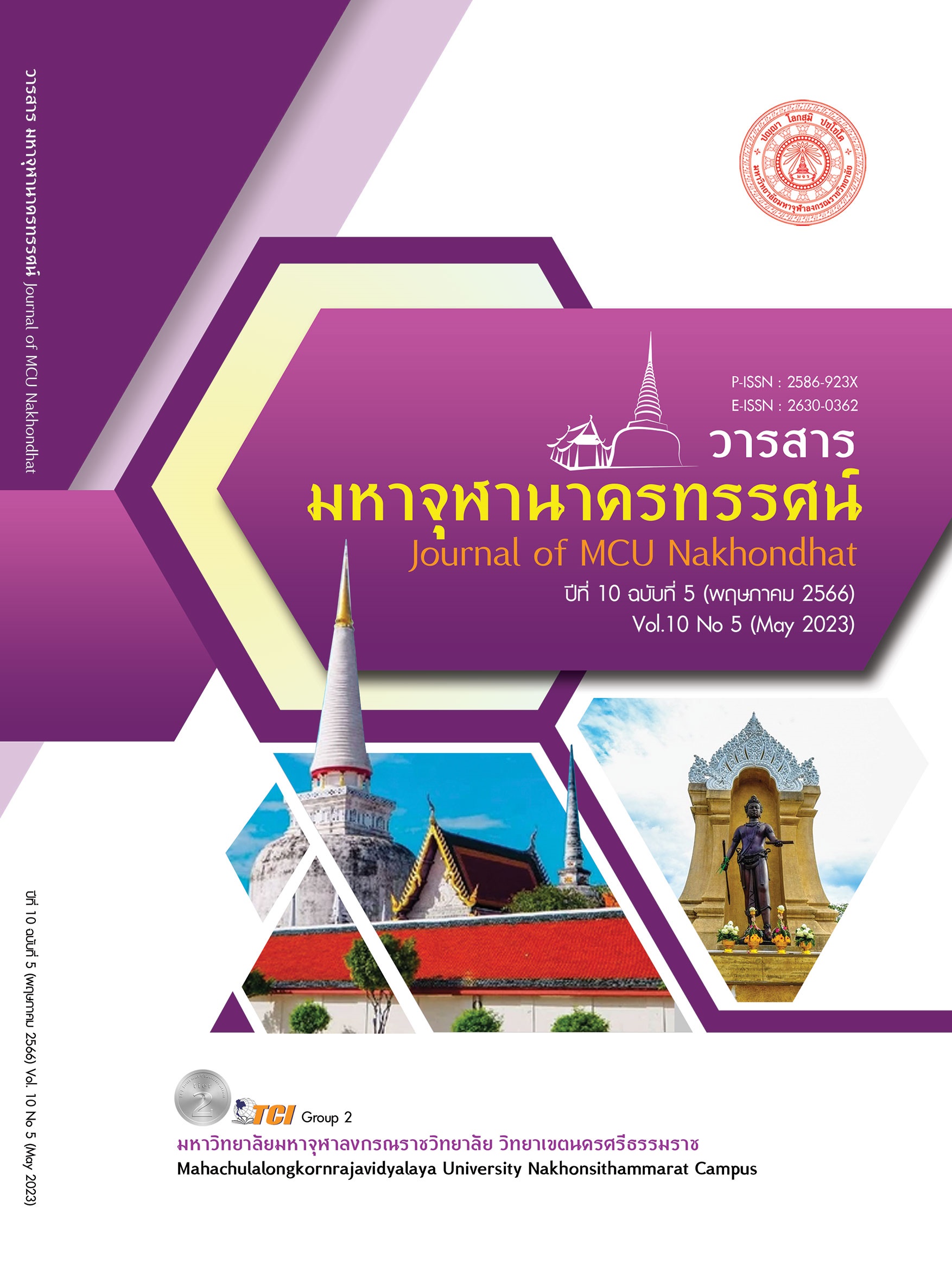THE FACTORS PROMOTING CULTURE OF PEACE IN EDUCATIONAL INSTITUTIONS
Main Article Content
Abstract
Peace culture in educational institutions arises from an effort to study principles, concepts, theories about “Peaceful culture” combined with the author's concept to find a conclusion about the image and characteristics of peaceful cultural behavior and how to create factors that promote peace culture in various aspects of education. It was found that peace culture in educational institutions is “related to the peaceful well-being of members through communication and the flow of educational activities under the principles of compassion and generosity; honor each other…… The general image of peace and culture in educational institutions appears in two general characteristics: physical characteristics related to comfort or well-being, called “External peace” and spiritual traits are associated with true peace factors, such as benevolence. Volunteer to help Respecting each other, etc. is called “inner peace”Therefore, creating factors to promote cultural peace must be done in conjunction with 2 aspects, namely the factors that promote external peace by using the Buddhist stipulations “Paratoghosa” and the factors that promote internal peace called “Yonisomanasikara” It was found that peace and culture in schools is not easy and cannot be achieved in a short time and requires positive effort with wisdom and keen vision of school administrators to create supporting factors. for sustainable results. It was further found that Santivithamma in educational institutions has many benefits and values, but the most important thing is that it enables educational institutions to have innovations in creating peace for learners both internally and externally. to society by being able to proudly meet the expectations of society towards the educational institute.
Article Details

This work is licensed under a Creative Commons Attribution-NonCommercial-NoDerivatives 4.0 International License.
References
เพิ่มศักดิ์ มกราภิรมย์. (2555). สันติวัฒนธรรม. กรุงเทพมหานคร: สถาบันสิทธิมนุษย์สยชนและสันติศึกษา.
จรัญ ภักดีธนากุล. (2556). นักกฎหมายกับ การพัฒนาระบบประชาธิปไตย. กรุงเทพมหานคร: จุฬาลงกรณ์มหาวิทยาลัย.
ชัยวัฒน์ สถาอานันท์. (2548). ความรุนแรงและสันติวัฒนธรรมในสังคมไทย. เรียกใช้เมื่อ 20 พฤษภาคม 2566 จาก https://prachatai.com/journal/2005/06/4261
บัณฑิกา จารุมา. (2562). วัฒนธรรมเชิงสันติสำหรับครู. วารสารมหาจุฬาวิชาการ, 6(2), 382-396.
บุญสิน ผิวขำ. (2560). ชีวิตกับสังคมไทย. กรุงเทพมหานคร: จิตรวัฒน์.
พระครูอุทุมพรภัทรธรรม และพระครูสุธีคัมภีรญาณ. (2563). ความสัมพันธ์การขัดเกลาทางสังคมกับแนวคิดการขัดเกลาทางสังคม ในพระพุทธศาสนา. Journal of Buddhist Education and Research, 6(2), 358-369.
มาติกา โภชฌงค์ และภัทรวรรธน์ จีรพัฒน์ธนธร. (2561). ปัจจัยที่ส่งผลต่อการตัดสินใจลาออกกลางคันของนักเรียนระดับประกาศนียบัตรวิชาชีพ วิทยาลัยอาชีวศึกษาพระนครศรีอยุธยา. ใน รายงานการวิจัย. มหาวิทยาลัยเกษตรศาสตร์.
สถาบันพระปกเกล้า. (2563). สันติวัฒนธรรมในสถาบันการเมือง เพื่อเสริมสร้างกระบวนการปรองดองของประเทศ กรณีศึกษาจังหวัดชายแดนภาคใต้. เรียกใช้เมื่อ 20 พฤษภาคม 2566 จาก https://www.kpi.ac.th/knowledge/book/data/1013
Lewis Coser. (1956). The Function of Social Conflict. United States of America: Beyond Intractability.


